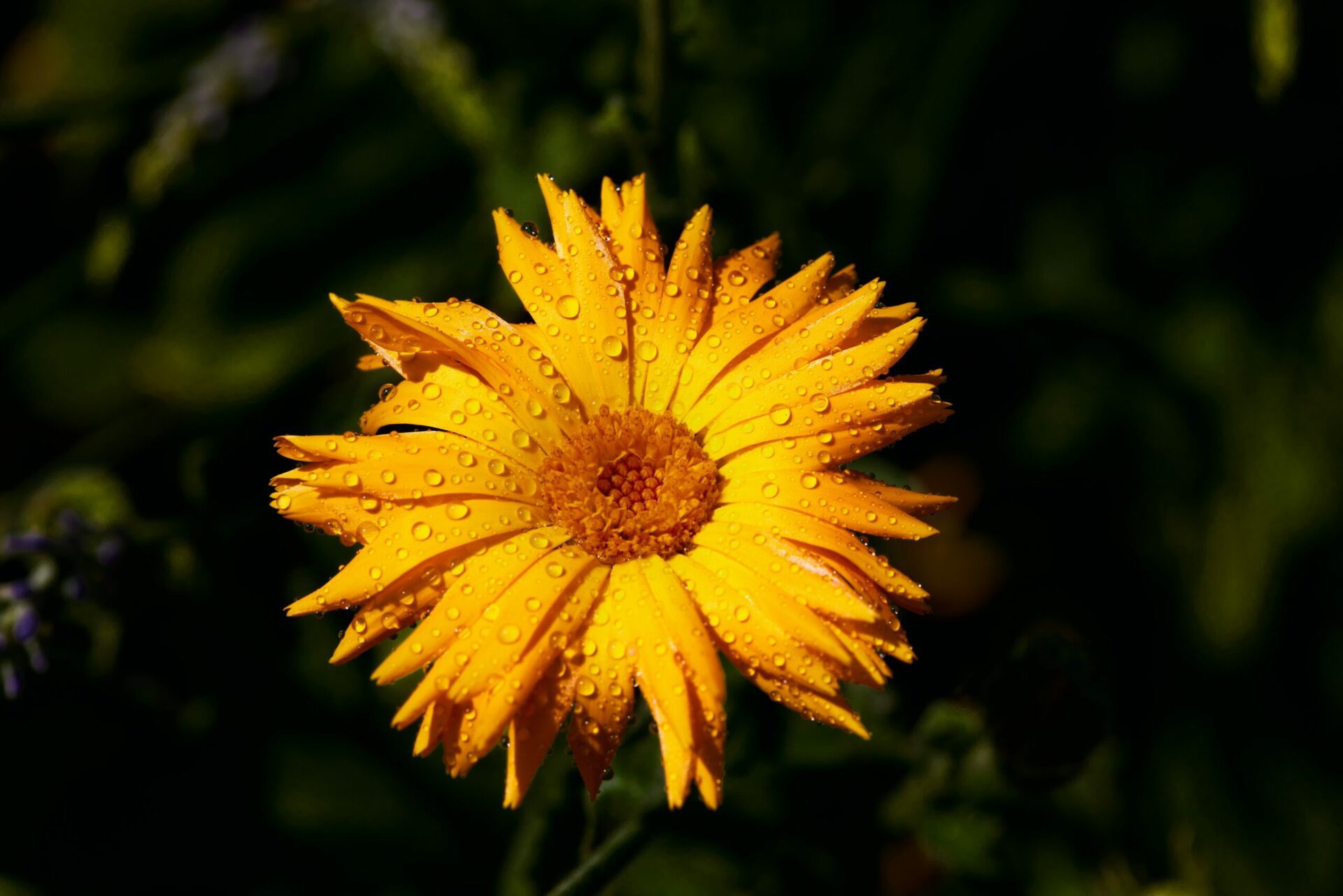Botanical Description:
Scientific Name: Calendula officinalis
Family: Asteraceae (Compositae)
Common Names: Calendula, Pot Marigold
Description: Calendula is an annual herb with bright, cheerful flowers and lance-shaped leaves. The plant can reach a height of around 18 to 24 inches. The flowers are vibrant orange or yellow, and they have a characteristic daisy-like appearance with a central disk surrounded by petals. The leaves are green and slightly hairy. Calendula blooms throughout the growing season, and its seeds are easily recognizable with their curled, hook-like appendages. The plant is well-known for its versatility and is often cultivated for both ornamental and medicinal purposes.
Disclaimer:
This Materia Medica is provided for informational purposes only and should not replace professional medical advice. Please consult with a qualified healthcare practitioner or herbalist before using any herbal remedies.
Therapeutic Actions:
- Anti-Inflammatory: Calendula exhibits anti-inflammatory properties, making it useful for various inflammatory conditions.
- Antimicrobial: It has mild antimicrobial actions, supporting wound healing and preventing infections.
- Cicatrizant: Calendula is known for its cicatrizant properties, promoting tissue regeneration and reducing scarring.
- Emollient: It acts as an emollient, soothing and moisturizing the skin.
- Immunomodulatory: Calendula may have immunomodulatory effects, supporting the immune system.
Constituents:
- Flavonoids: Calendula contains flavonoids with antioxidant and anti-inflammatory effects.
- Triterpenoids: Triterpenoids contribute to Calendula’s healing properties, including its effect on wound healing.
- Carotenoids: The vibrant color of Calendula flowers comes from carotenoids, which also have antioxidant benefits.
- Essential Oils: Calendula contains essential oils with various therapeutic properties.
Traditional Uses:
- Wound Healing: Calendula has been traditionally used to aid in wound healing, reducing inflammation and promoting tissue repair.
- Skin Conditions: It is applied topically for various skin conditions, including eczema, dermatitis, and minor burns.
- Oral Health: Calendula-infused mouthwashes or gargles are used for oral health, addressing issues like gingivitis.
- Menstrual Support: Calendula is traditionally used to alleviate menstrual cramps and support overall menstrual health.
- Digestive Aid: Infusions of Calendula are used for mild digestive complaints.
Dosage and Preparation:
- Infusion/Tea: Prepare a tea by steeping 1-2 teaspoons of dried Calendula flowers in hot water for 10-15 minutes. Drink up to three times a day.
- Topical Applications: Calendula-infused oils, creams, or salves can be applied topically to affected areas.
- Mouthwash: Calendula can be used as an ingredient in homemade mouthwashes. Infuse dried flowers in warm water, strain, and use as a gargle.
- Tincture: Calendula tinctures are available. Follow product recommendations or herbalist advice for dosage.
Cautions and Considerations:
- Allergic Reactions: Some individuals may be sensitive to Calendula. Perform a patch test before extensive topical use.
- Pregnancy and Lactation: While Calendula is generally considered safe, pregnant and lactating individuals should consult with a healthcare practitioner before using it extensively.
- Cross-Reactivity: Individuals with allergies to plants in the Asteraceae family (ragweed, marigolds, etc.) may experience cross-reactivity and should use Calendula cautiously.
- Internal Use: Internal use of Calendula, such as ingesting large quantities, should be done under the guidance of a healthcare practitioner.
Conclusion:
Calendula, with its vibrant flowers and a multitude of therapeutic actions, has been a staple in traditional herbal medicine for centuries. Its versatility extends from wound healing to skincare and beyond. The gentle yet effective nature of Calendula makes it a popular choice for various applications. As with any herbal remedy, individual responses may vary, and consulting with a qualified healthcare practitioner or herbalist ensures safe and effective integration of Calendula into individual health and wellness plans.






One comment on “Calendula: Herbal Plant Profile”